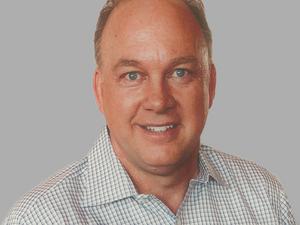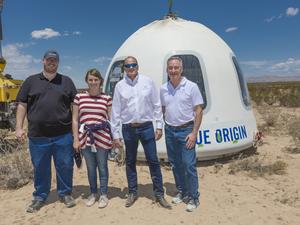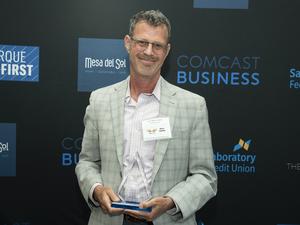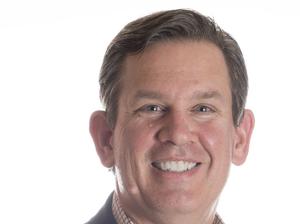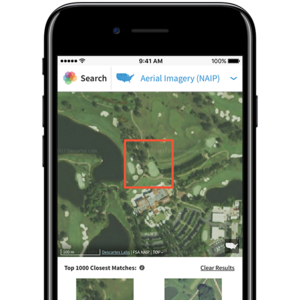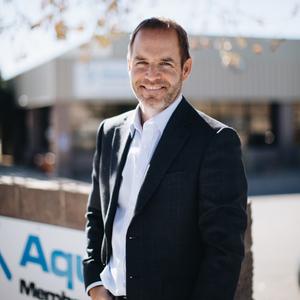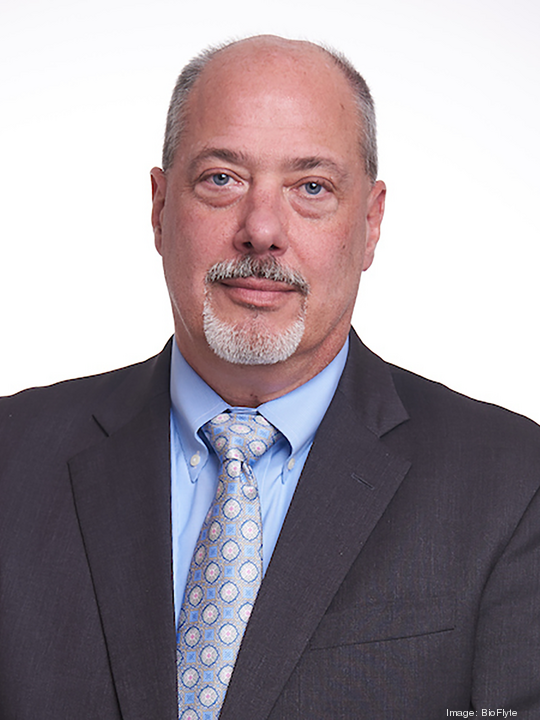
In 2020, Todd Sickles and his wife moved to Santa Fe.
D.C. residents for nearly 25 years, they frequently traveled out West. As they neared retirement, they decided they wanted to relocate to Arizona, Colorado or New Mexico. His wife fell in love with the Land of Enchantment.
Sickles was in the process of exiting Tsymmetry where he served as CEO for 10 years. Headquartered in D.C., the firm focuses on IT consulting and services for the federal government. When Covid hit, Sickles was able to complete his transition out of that role remotely from New Mexico.
He then decided to take a year off.
Sickles capitalized on the state’s outdoor amenities, engaged in community service and joined the New Mexico Angels organization. It was through the New Mexico Angels that he met the BioFlyte team.
Initially, the New Mexico-based bioaerosol surveillance company, which was founded in 2020, wanted Sickles to do some consulting for them. That quickly changed to them offering him the CEO position. In mid-May of this year, he stepped into the role. The company officially announced the change in July.
Albuquerque Business First recently caught up with Sickles to talk about his plans for the company, which include a facility expansion in Albuquerque, local job growth and bringing BioFlyte’s products to market. The company currently has 15 employees and they plan to be at 25 by the end of next year.
“We're very proud of what we're doing here,” Sickles said. “And we think it has a tremendous impact nationally, globally and for the state of New Mexico. … I want to do everything I can to pull talent from the state and keep it in the state. … I really do want biotech growing in the desert.”
The interview was edited for brevity and clarity.
Albuquerque Business First: What is it about BioFlyte that really stood out to you?
Todd Sickles: When I retired, I didn't know if I wanted to come back or not. I had a couple of opportunities with other firms in New Mexico to join as CEO. … The BioFlyte opportunity came around … and the bottom line is I'm just incredibly passionate about their mission. This is very disruptive technology. And this technology, if introduced correctly and successfully, is absolutely going to protect [products], it's going to protect lives, it's going to protect businesses. And without being too dramatic, it can protect economies. … I have a background in national security and public safety. … I felt that I had some background, in conjunction with the team, I could contribute and possibly help the firm drive forward.
What's your layman's version of what BioFlyte does? The high level, we're into biodefense. We provide instruments that do bioaerosol surveillance. We are taking a look at constituents in the air that could be toxic, harmful to individuals and/or [products] and we are identifying those very, very quickly. It's a risk mitigation solution designed to identify bad stuff (biotoxins, viruses and bacteria) in the air.
What are some of the initial goals you've set for this role? The first thing I wanted to do was, in essence, take a look at the maturity of the enterprise. What processes were there, what processes weren't there, what we may need to engineer in the short term. I wanted to take a look at our channel design. How do we go to market? We spent a lot of time on that. We put together much better forecasting methodologies than I think what we had had before. We brought more rigor and discipline to the business. … It’s a young company and it's transitioning from a pre-production to a market mobilization phase — and there was some work to do. So, [we] did a lot of that and then also came up with our initial market and client development strategies.
With this next phase you are entering, what kind of growth do you see in terms of headcount and that sort of thing? I would call this next phase, really, market mobilization. This is where we're fully baking out the company. So, I'll give you a couple of examples. One, is in the enterprise itself, we've sort of redone the organization models. We have the right functions reporting to the right managers. … The second thing is I brought more structure around product development. … We put together very formalized product development workstreams. Let's say as an example, by January our standard Z 200 mass spectrometer, it'll be pencils down, we have our standard configuration. The high-resolution version of that, which is used for a different application, by April will be done. It's not going to be this back-and-forth new parts, new product because we have to take it to market. … [Another thing] we've done is we've established what our path to market is. … We're building a digital visualization layer into the tool whereby our clients will be able to get dashboards not only showing the performance of the product, uptime, accuracy, etc. but what does it identify? If you had 14 or 15 of these geographically dispersed across your landscape, you'd be able to pull in all this data and consolidate it and see what's happening in your environments across your enterprise. … I think we'll have the data visualization and dashboarding piece ready probably by next June. And will most likely have the integrated sort of interactive analytics piece toward the end of next year.
Is this something you're marketing globally or are you just marketing this in the U.S.? Right now, we're focusing on the United States, I wouldn't say exclusively, but predominantly. We do have a couple of passenger airlines outside the United States who are interested in mobile technology for aircraft. I also have … government affiliations in some of the intelligence community in other countries that would be interested in utilizing the technology. But we're not quite there yet. And State Department is a huge target of ours. And that was probably my primary client over the last 10 years. We are looking to leverage that technology in embassies and consulates.
If you and I were to talk again a year from now, what do you hope you can say … these are the boxes I was able to check? I would say that we would have successfully completed another probably four to five strategic evaluations of our instrument in both the government and commercial space, and that we were on our way to scaling those wins. … I would say that we would have developed the offering all the way up to the integration of our software platform with the client’s platform so that we could participate more in AI/ML (artificial intelligence/machine learning). The third thing is that we would have continued to grow the company, scale the company and create opportunities for our people. We’ve got a pretty good scale plan for resources over the course of the next three years. Just bringing more business to the state, which was something that I started to become interested in with New Mexico Angels and I'm really interested in that now because I am leading a firm.
Is all the manufacturing going to be happening in New Mexico? You bet. We’re looking to expand our facility. We're finalizing a lease agreement right now, as we speak. We plan to move on or around the 1st of October. … We're going to be tripling our facility. We are going to have dedicated test pods. We're going to have dedicated labs inside the manufacturing space, new offices, etc. And that will position us for the type of expansion that we think we're going to have over the next two to three years. And with that, of course, comes additional talent. … If you look at where we're going, not only from pre-production to actual production but to further develop our product offerings … we have to evolve the workforce. We have very, very talented, skilled engineers who are going nowhere. We're just going to be giving them more responsibility as the product becomes more complex, but they're going to stick to engineering. But I'm going to need software developers. I'm going to need artificial intelligence experts, and I'm going to need manufacturing and assembly resources who can do that work at higher volume. It's a really interesting sort of pivot we're going to do over the next couple of years in terms of gearing up for much higher volume levels.
What will that square footage number [for the new Albuquerque facility] be? It’s going to be around 5,500 square feet.
Is there anything you’d like to add? We really do think it's disruptive in the marketplace. And we have a lot of potentially interested corporate investors. … I think that we need to expand our visibility in New Mexico. We really do. We have such a cool technology. We have such sharp people working for us and such tremendous potential for this business. … I would love to do some type of internship program with UNM, with New Mexico State, maybe others. There are some really talented students out there who could come into a firm like this on an internship basis and learn a lot about biotech.
